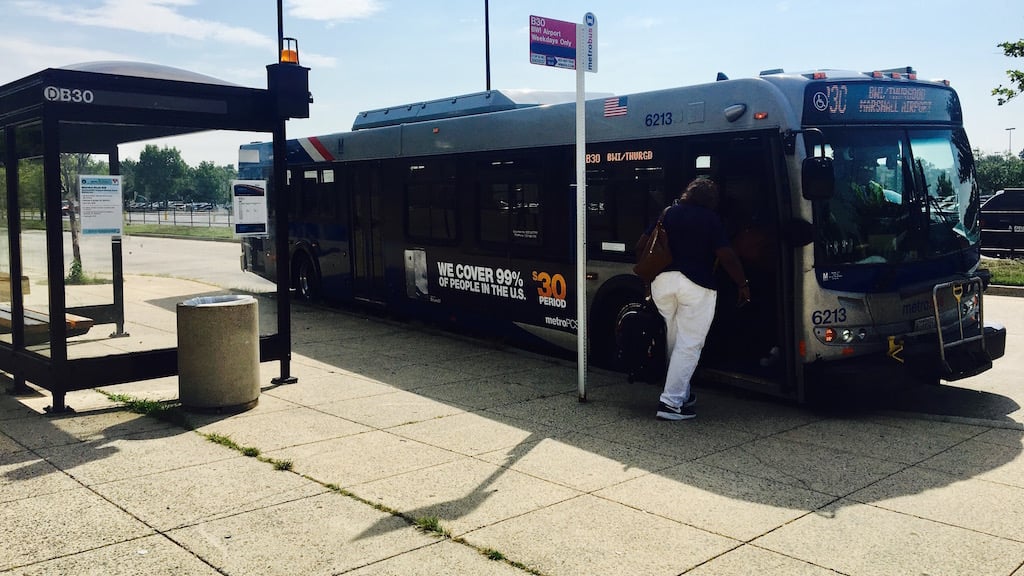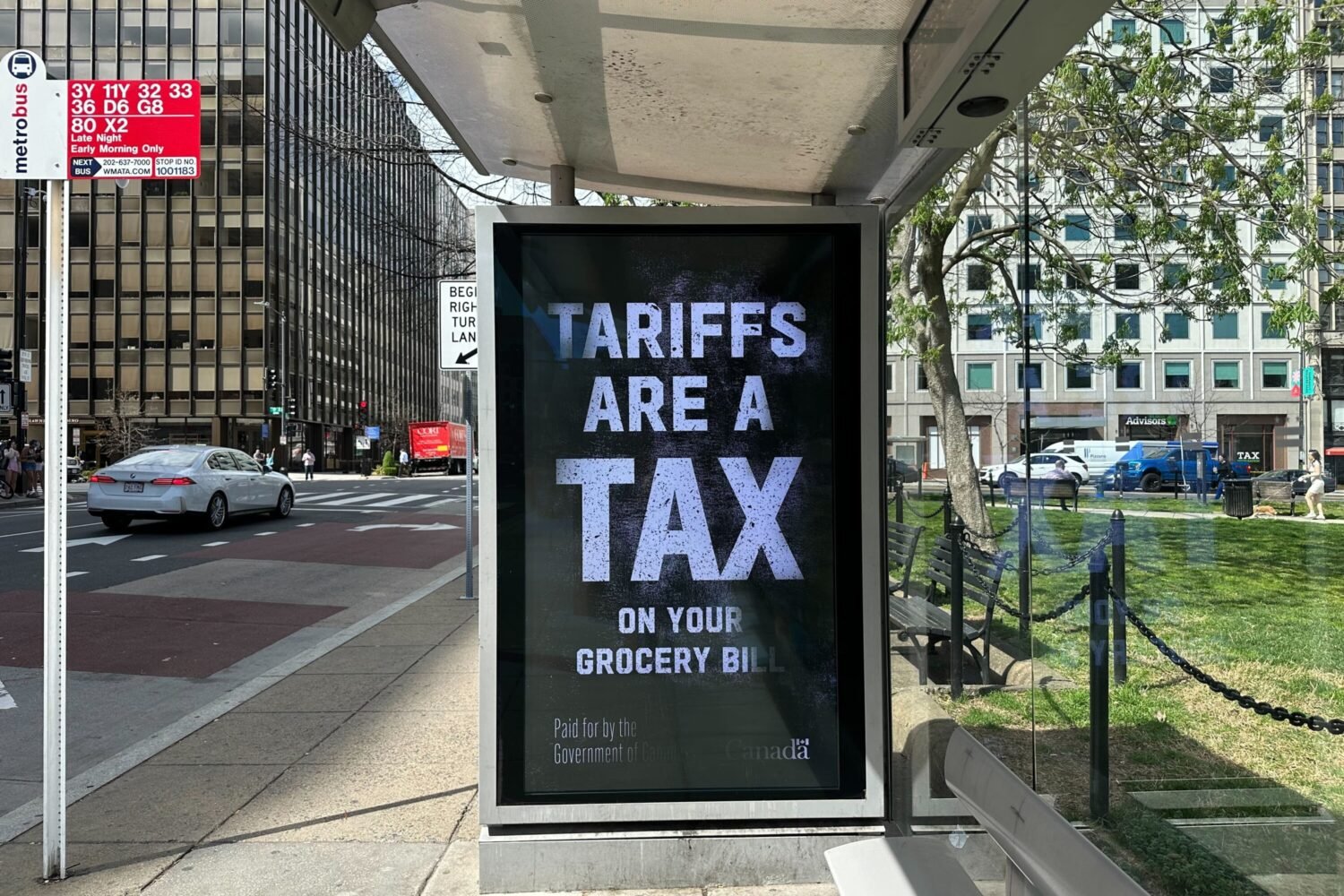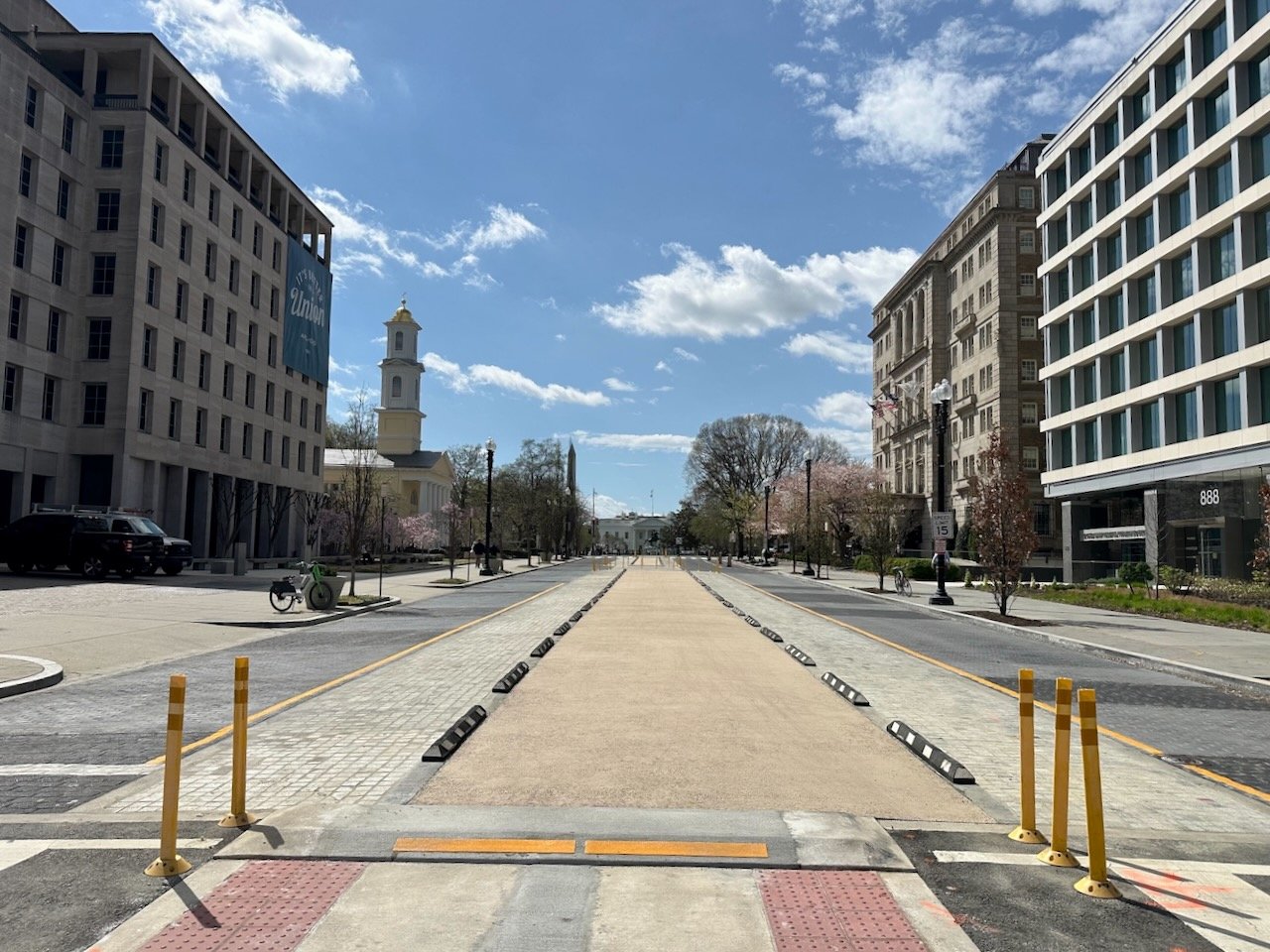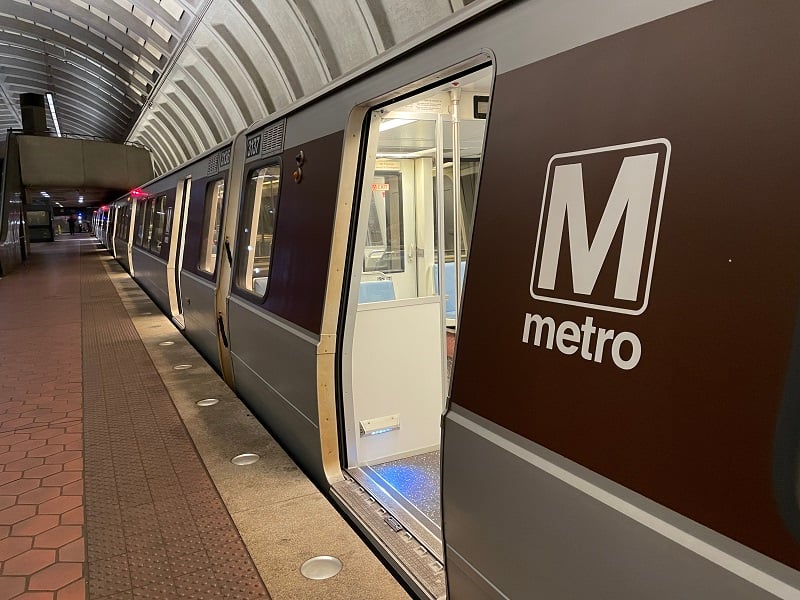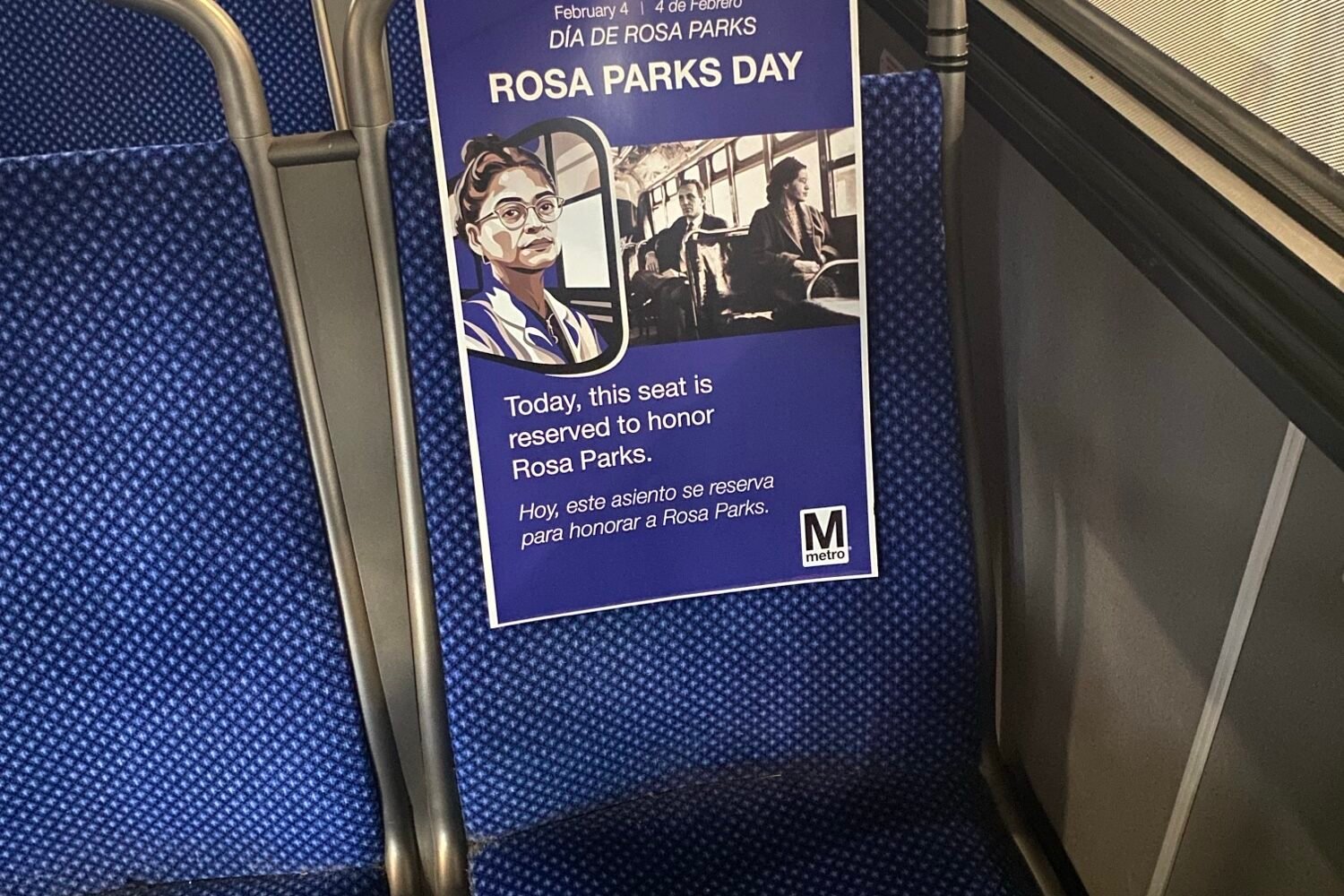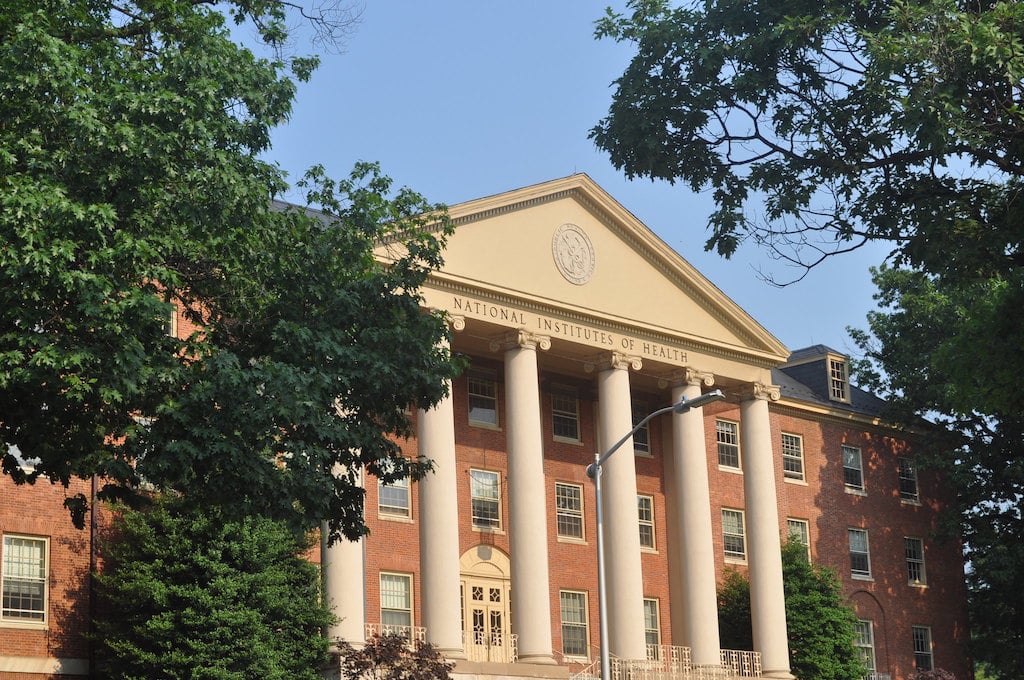Perhaps the only thing more headache-inducing than the heat of Washington summers is the challenge of getting away from it. Washingtonians have three airports from which they can fly out of, but getting to two of them—Dulles International Airport and Baltimore-Washington International Airport—can be a doozy.
The B30 bus to BWI was one of several lines affected by the Washington Metropolitan Area Transit Authority’s most recent round of service cuts and fare hikes last month. Not only did Metro increase the fare to $7.50 (a price that’s more than doubled since 2010), but it also cut weekend service. Currently, the B30 runs every hour, on weekdays only. The 5A bus to Dulles faced the same fare hike, but was spared the weekend cuts.
During a week when thousands of commuters were facing hour-long delays due to single-tracking trains–and Metro was trying, unsuccessfully, to temper passengers’ moods with free coffee–cuts to the B30, which runs from Greenbelt, didn’t generate much buzz.
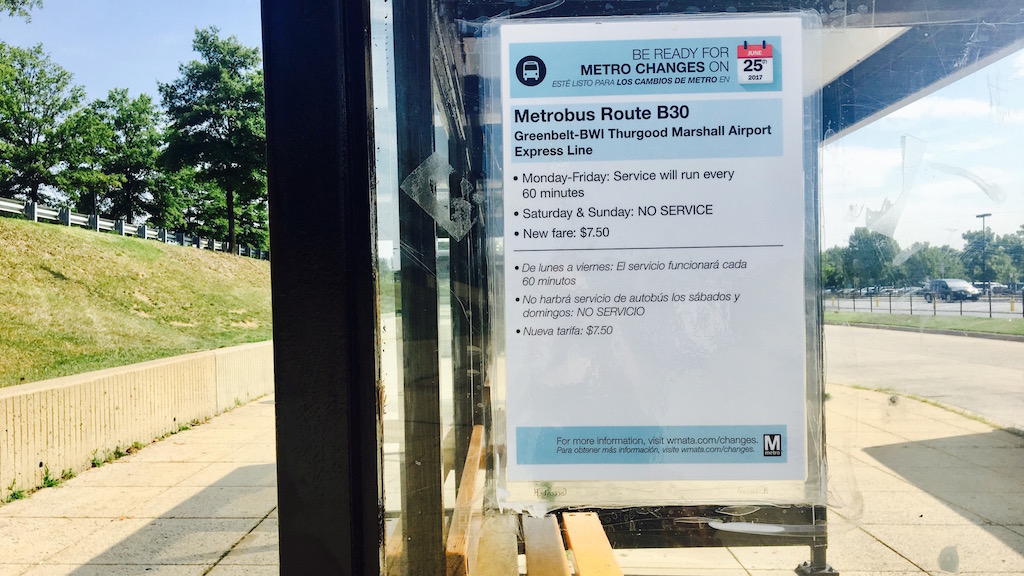
But out toward Beltsville, the decision has impacted regular B30 riders. “It sucks,” said Pat Pope, a lifelong resident of DC, as she waited for the bus on a recent Thursday morning. Pope, who was on her way to Louisville for a cousin’s funeral, said she would have to figure out a different way to get back home when she returned to DC on Saturday, due to the weekend cuts. On this particular morning, she had missed the 9 AM bus, and had to wait an hour for the next one. “I know Metro means well, but I don’t know if they really thought it out. Travel just isn’t the way it used to be.”
Ridership on the Metro has been steadily declining since 2010, and this drop was a major reason that WMATA decided to make cuts to the B30, according to a transit authority spokesperson. Indeed, the B30 has one of the lowest riderships of any Metro bus route–in 2016, it served an average of just 392 passengers a day. Pope never saw it that way, however: “Usually this spot, going to the airport, it’s full.”
Ken Button, a transportation expert and professor of public policy at George Mason University, said the B30 cuts are indicative of a national trend of commuters moving away from public transportation. With cheaper gas prices and the advent of car-sharing services, he said, travelers are simply less likely to use a bus service to get to the airport. BWI, which has the lowest average airfares of any airport in the Washington region, is a popular choice for families and young people. And Button noted that for people traveling in a group, splitting an Uber might actually be more cost-efficient than paying $7.50 a head for the B30. “A bus is not the most convenient way of actually getting to an airport,” he said. “For a few dollars more, you can go by Uber.”
Button said that air travelers–who tend to be in a higher income bracket–might not be particularly affected by B30 cuts. But this isn’t necessarily true for everyone going to BWI: “I’m not altogether sure that air travelers are lower income, although of course employees at the airport usually use it.”
Accessibility for low-income riders is what worries Eben Burnham-Snyder, a resident of Van Ness who flies out of BWI regularly. “When something like a B30 bus gets cancelled, it’s an inconvenience to me but I can absorb the cost,” said Burnham-Snyder, who previously worked for the Department of Energy, and now splits time between Houston and DC. But, he said, “to see that the price has more than doubled over the span of six to seven years is pretty astounding. For someone on a fixed income, that matters.”
It’s a bit of a historic irony that Metro General Manager Paul Wiedefeld spent six years managing BWI during his tenure as CEO of the Maryland Aviation Administration prior to taking his current job. During that time, according to his WMATA bio, BWI became “the leading airport in the Washington D.C. region through route expansion and significant airport development.” But by many accounts, it would seem that cutting the B30 is scaling back service for certain parts of the Washington area.
Whoever the B30 was originally intended for, it’s clear the bus serves more than just air travelers today. On a recent evening, one woman who was in a wheelchair could be heard on the phone with WMATA, saying, “I don’t want to be stranded here all night.” Blocked by other cars, the B30 was unable to come to the curb, leaving the disabled passenger (who wished only to use her last name, Adams) to wait for the next bus. Adams said she often runs into this problem with the bus, which she takes regularly to her doctor’s appointments.
Another passenger, University of Maryland student Bharadwaj Chintalapati, said the cutbacks in service make his summer commute to an internship in Timonium, in Baltimore County, grueling: “From the perspective of someone who doesn’t have a vehicle to drive around town and reach far off destinations, the B30 should be running more frequently,” says Chintalapati, who spends five hours on public transportation every day between the bus and the light rail that takes him from the airport to Timonium.
Benjamin Singleton, who started working for Prospect Airport Services at BWI after retiring from General Motors, feels lucky to be able to drive to work. But he knows not everyone has this luxury. “I’ve got my pension, I’ve got my Social Security….this is the icing on the cake for me. But for some people, this is their livelihood.”

